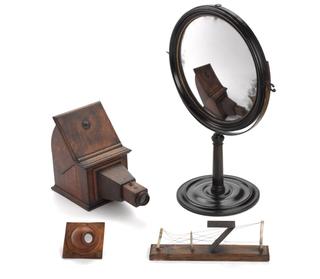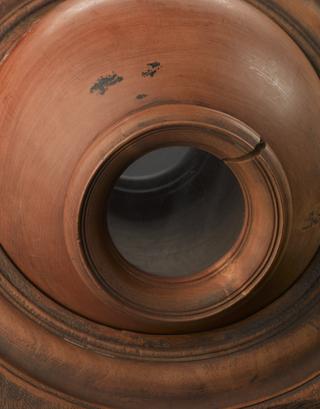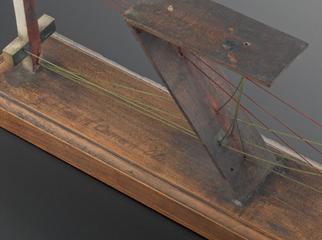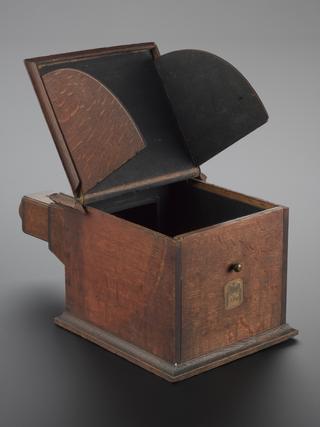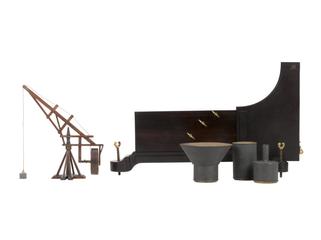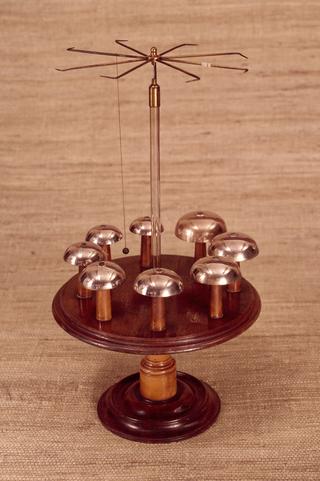
Mechanical equinoctial sundial, before 1752
- maker:
- Jeremiah Sisson






Mechanical equinoctial sundial, before 1752. The clock face was turned approximately south, the first pinhole was moved to the date, and the orientation of the dial was altered until the spot of light from the first pinhole coincided with the second. Turning the dial turned the hands on the clock, which then showed the time.The instrument was made by Jeremiah Sisson before 1752 as it shows the Julian calendar.
Details
- Category:
- King George III
- Object Number:
- 1927-1465
- Materials:
- brass, silver, steel, glass and paper (fibre product)
- Measurements:
-
overall: 155 mm x 50 mm x 120 mm, 0.3 kg
- type:
- sundials and equinoctial sundials
- copyright:
- Unlinked Name
- credit:
- King's College, London
